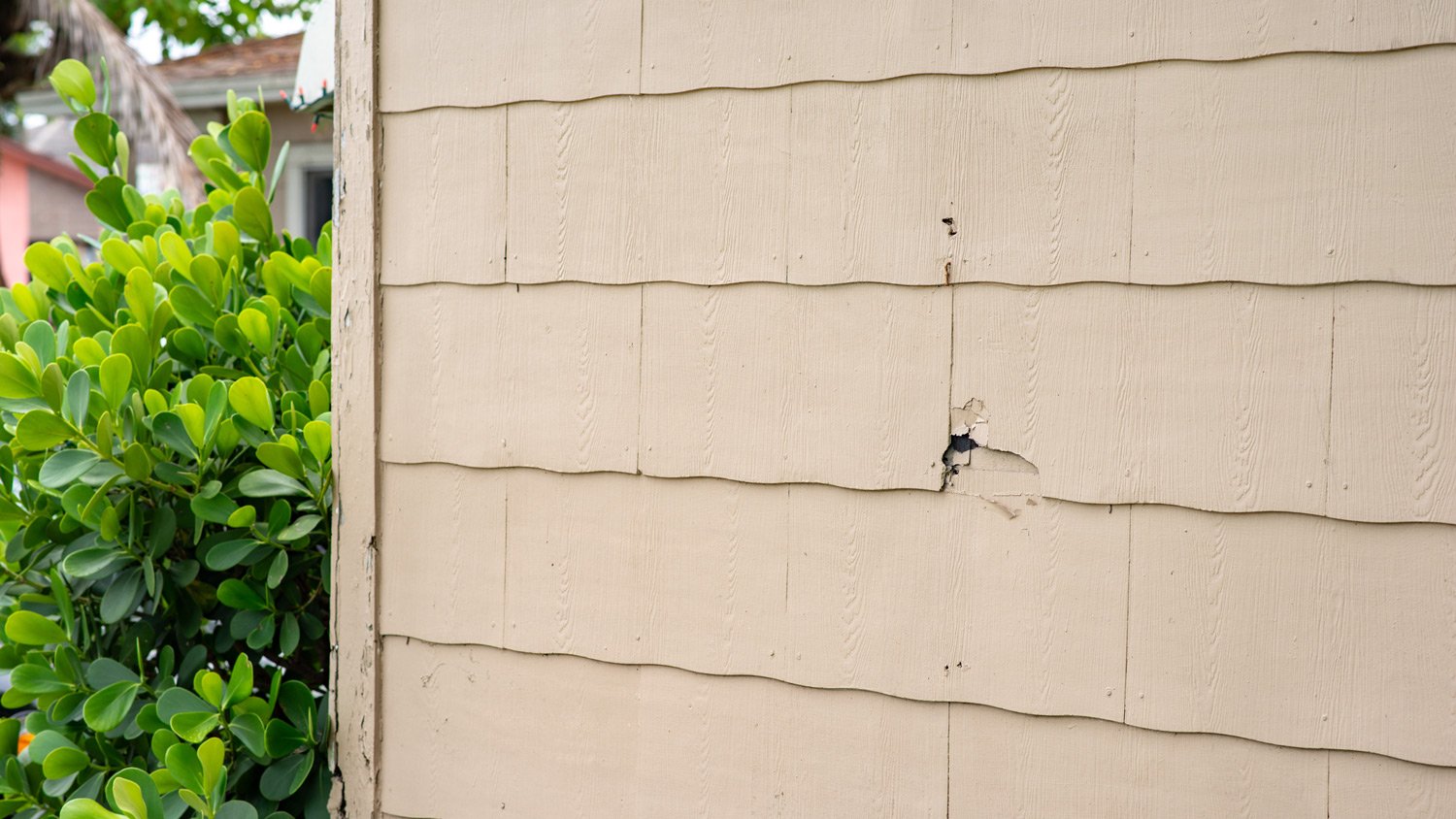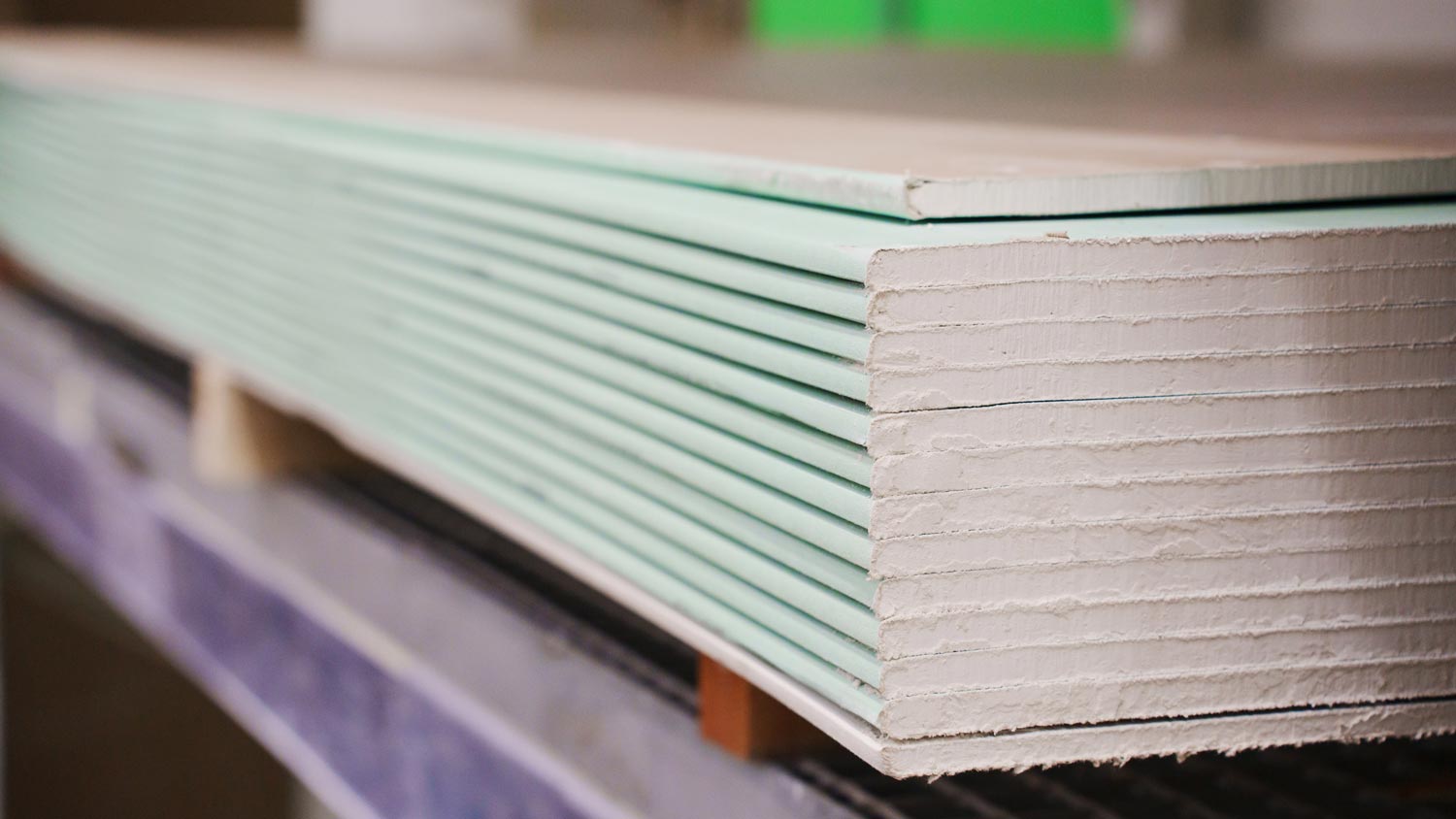4 Signs of Asbestos In Your House
Learn how to seek out asbestos in your home like a pro


Asbestos is considered highly toxic and can cause severe health problems.
Asbestos can be found in older homes' ceilings, floors, roofs, and pipes.
If you suspect asbestos in your home, call an asbestos test specialist and do not remove the suspected asbestos yourself.
Like natural gas, asbestos is invisible to the naked eye, and it‘s odorless. If asbestos is invisible and odorless, how can you detect signs of asbestos in a house?
There are a few indicators of asbestos that a quick DIY investigation can identify, and then it’s best to hire a professional to test the suspect areas. Here’s a guide to what to look out for (and where to stay away from) to keep your home safe.
What Is Asbestos?
Asbestos refers to clusters of six natural minerals: chrysotile, amosite, crocidolite, tremolite, anthophyllite, and actinolite. Both the EPA and OSHA regulate the use of asbestos because it’s considered highly toxic. From the 1930s through the 1970s, asbestos was often used in construction materials like flooring tiles, insulation, and pipework, according to OSHA.
Why is Asbestos Dangerous?
Even though you can’t see asbestos, it can cause major health concerns you’ll notice over time. Being exposed to asbestos can cause mesothelioma, in addition to lung, ovarian, and laryngeal cancers. Even more, some people can develop asbestosis, which is a condition where the lung tissue becomes progressively scarred.
It’s important to note that asbestos exposure is cumulative—that is, numerous short-term exposures can add up to cause the same health problems as long-term exposure.
Leave asbestos removal to the professionals. Long periods of exposure to a high volume of disturbed asbestos can have harmful effects on your health, including serious diseases like asbestosis, mesothelioma, and lung cancer.
Signs Your Home May Have Asbestos
Asbestos is commonly found in older homes' insulation, pipes, flooring, roofing, and textured ceilings. Before investigating, make sure you wear protective hear and avoid direct contact with materials that you suspect might contain asbestos. While these four signs may hint at asbestos, the only way to be completely sure is to have a professional test it.
1. Your Home Was Built Before the Early 1980s
If your home was built between the 1940s and the 1980s and you haven’t had any major remodeling, you most likely have asbestos in your home. But if asbestos is so harmful, then why was it used in homes before the 1980s?
Asbestos was an inexpensive, fire-retardant material that was an effective insulator. Besides these qualities, asbestos was also strong and resistant to chemicals, water, and electricity, making it almost the perfect construction material. Even though asbestos exposure was initially linked to cancer in 1934, it wasn’t until 1989 that the EPA started to phase out asbestos materials in the construction industry.
If you have an older home and are unsure of its history, consulting an asbestos testing pro near you will be your best bet to see if you have asbestos lurking somewhere you don’t want it.

2. Your Home Contains Vermiculite Insulation
Even if you have a home that was built after 1980, your home might have asbestos insulation or vermiculite insulation. This type of insulation was used from 1940 to the early 1990s due to its odorless and fire-resistant properties. Unfortunately, some vermiculite insulation can contain asbestos, putting you and your family at risk for health problems.
Vermiculite insulation is usually light and gravelly with a texture similar to tiny pebbles or coarse sand. To check, peek into your attic or any other area where insulation might be exposed. If your insulation has this granular appearance and shines a bit, it’s likely vermiculite. Be sure to avoid handling it directly.
It’s better to be safe than sorry—if you are unsure if your home is adequately air-sealed or has the proper insulation levels, call a professional to have your insulation tested.
If you think you have vermiculite insulation, do not attempt to remove it yourself. Any disturbance to the insulation can release asbestos fibers into the air. It’s always best to consult an asbestos specialist to handle the removal for you.
3. You Have Vinyl Flooring or Millboard
With some vinyl flooring installed between 1952 and 1982, asbestos can be found in the adhesives and backing of the floor tiles. Even more, companies like Congoleum and Armstrong used asbestos as a glossy finish on the top of their vinyl floor tiles to give it a “no wax” quality.
Similarly, millboard used as insulation and fire protection around furnaces and other heat sources can also contain asbestos. This was used between 1906 and 1990, making it a widely used health hazard. Note that repairing or removing an appliance with millboard around it could release asbestos fibers.
4. Your Home Has Corrugated Roofing
Your roof isn’t something you may look at often, but there could be hidden dangers right above your head. Corrugated asbestos sheets have previously been used in roofing, especially in factories and farms. Even though asbestos sheet production in the U.S. ended in the 1980s, it was legal to import from other countries until recently. There are new EPA asbestos regulations that completely ban the use of asbestos products.
Although the ban helps to protect future families, it’s still important to note that your home’s existing roof could have asbestos fibers. If the corrugated roofings has a slightly textured surface or looks a bit worn or brittle, it could be an older asbestos cement product. However, it’s difficult to tell just by looking. It’s best to call a pro to assess asbestos levels.
Can I DIY Asbestos Testing and Removal?
The EPA highly recommends hiring a professional to test for asbestos. Some states allow homeowners to test their properties themselves, in which case you can purchase kits from online retailers. Check with your local health department to determine if your community requires you to hire an asbestos specialist.
| DIY Asbestos Testing | Professional Asbestos Testing |
|---|---|
| Less expensive option | More accurate testing and results |
| Quick way to test your home | Less risk to your health |
| Potentially dangerous for your and your family’s health | Minimal disruption to potential asbestos fibers |
| May not meet regulatory standards in some states | Recommended by the EPA |
When it comes to removing asbestos from your home, we never recommend a DIY approach. Even disturbing the potential asbestos could cause you to inhale the fibers, which could cause severe health problems.
What To Do if Your Home Has Asbestos
Your next steps after determining that your home has asbestos vary, depending on the type of asbestos, where it’s at, and whether or not it’s friable. Friable asbestos means that the material could easily break apart, allowing the material to become airborne (and dangerous). Some materials contain asbestos, but they are non-friable. These materials, in good condition, may still be safe.
Depending on the condition of the asbestos, your local asbestos removal specialist may choose to repair the areas containing asbestos with an encapsulant or remove it. If the professional determines that the asbestos needs to be removed, you’ll need to stay out of the home until they perform an air test to ensure all residue is gone.
The cost of asbestos removal can feel expensive, but it’s well worth the price. Asbestos removal costs between $1,100 and $2,800 on average.
Never attempt to remove asbestos from your home yourself.
Frequently Asked Questions
If detected during the selling process, asbestos can significantly affect a home's value due to its potential health risks and the cost of removal or abatement. Prospective buyers might negotiate for lower prices or demand the asbestos be removed before finalizing a purchase. On the flip side, if you detect and remove asbestos before selling, you shouldn’t see a decline in your home’s overall value.
Federal laws don’t require a seller to tell a buyer if the home contains asbestos, according to the U.S. EPA. However, some states require sellers to disclose the information. Check your state regulations or talk to a realtor if you plan to sell or purchase a home built before 1980.
Depending on the size of your home, the inspection process could take a few hours or a few days. While inspecting your home, the asbestos specialist will take small sections of the potentially contaminated material. They will then send the sample to an accredited laboratory or the local health department for testing.
The cost of asbestos testing depends on your location, the home's size, and the testing area's complexity. Plan to spend between $230 and $800 for testing. During testing and while handling potential asbestos, the specialist may wear protective gear, including gloves, overalls, appropriate footwear, and respiratory equipment.
Unfortunately, asbestos is not easily identified and can often be hidden in plain sight in your home. While it can look like fluffy fibers, tiny pieces can also appear in materials like plastic or cement, making it impossible to identify on your own properly.
Plus, since asbestos is so dangerous when disturbed, you should never root around to try and find it. This job is best for a professional who can test for the material properly.
Many homeowners may never have to test their homes for asbestos. Asbestos particles are only dangerous if they become airborne. If you plan to do construction or notice damage to piping, siding, or drywall, you should hire a specialist to test for asbestos.
If you plan to remodel your home or have any concerns, you should have your home tested for asbestos just to be safe.





- What Does Asbestos Look Like?
- Do Home Inspections Check for Asbestos? What You Need To Know
- When Was Asbestos Used in Homes? What to Know About the Once-Popular Housing Material
- How to Clean Asbestos Safely
- Where Is Asbestos Found in a Home?
- What Is Asbestos?
- How Do I Clean My House After Asbestos Exposure?
- What Does Asbestos Insulation Look Like?
- How to Test for Asbestos Safely
- Signs of Asbestos in Wire Insulation
















